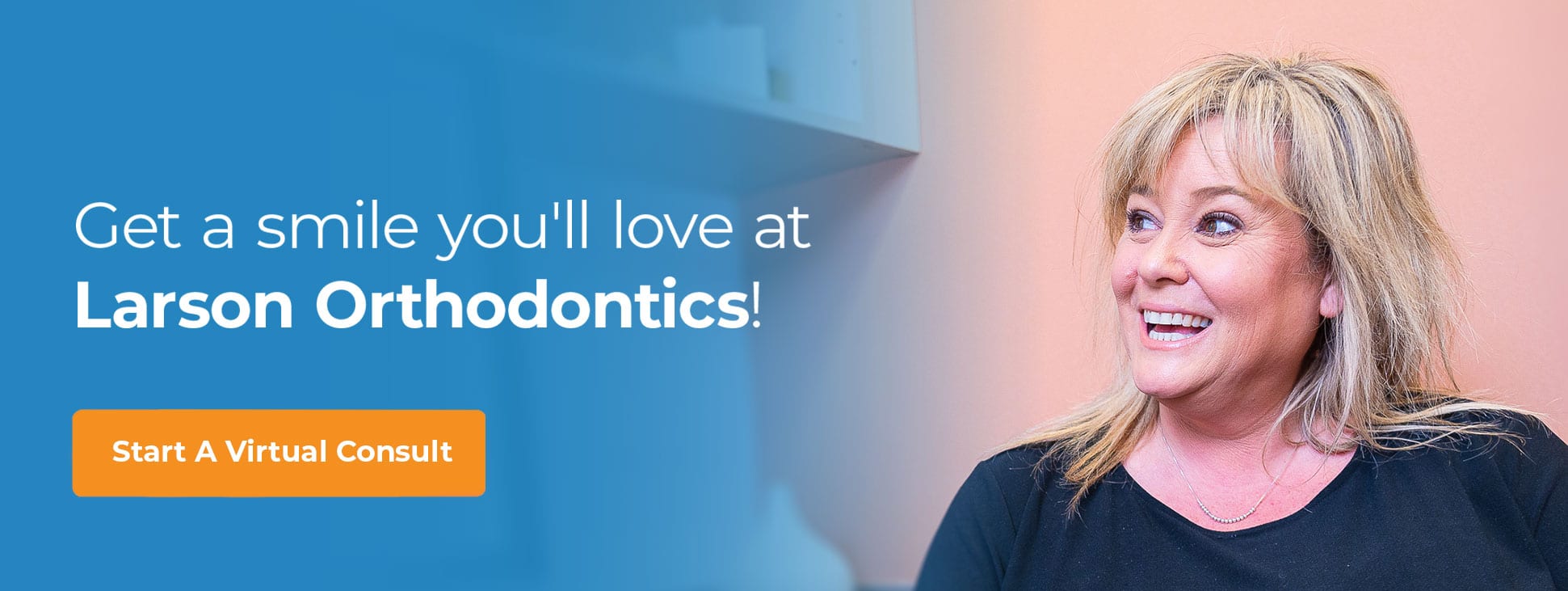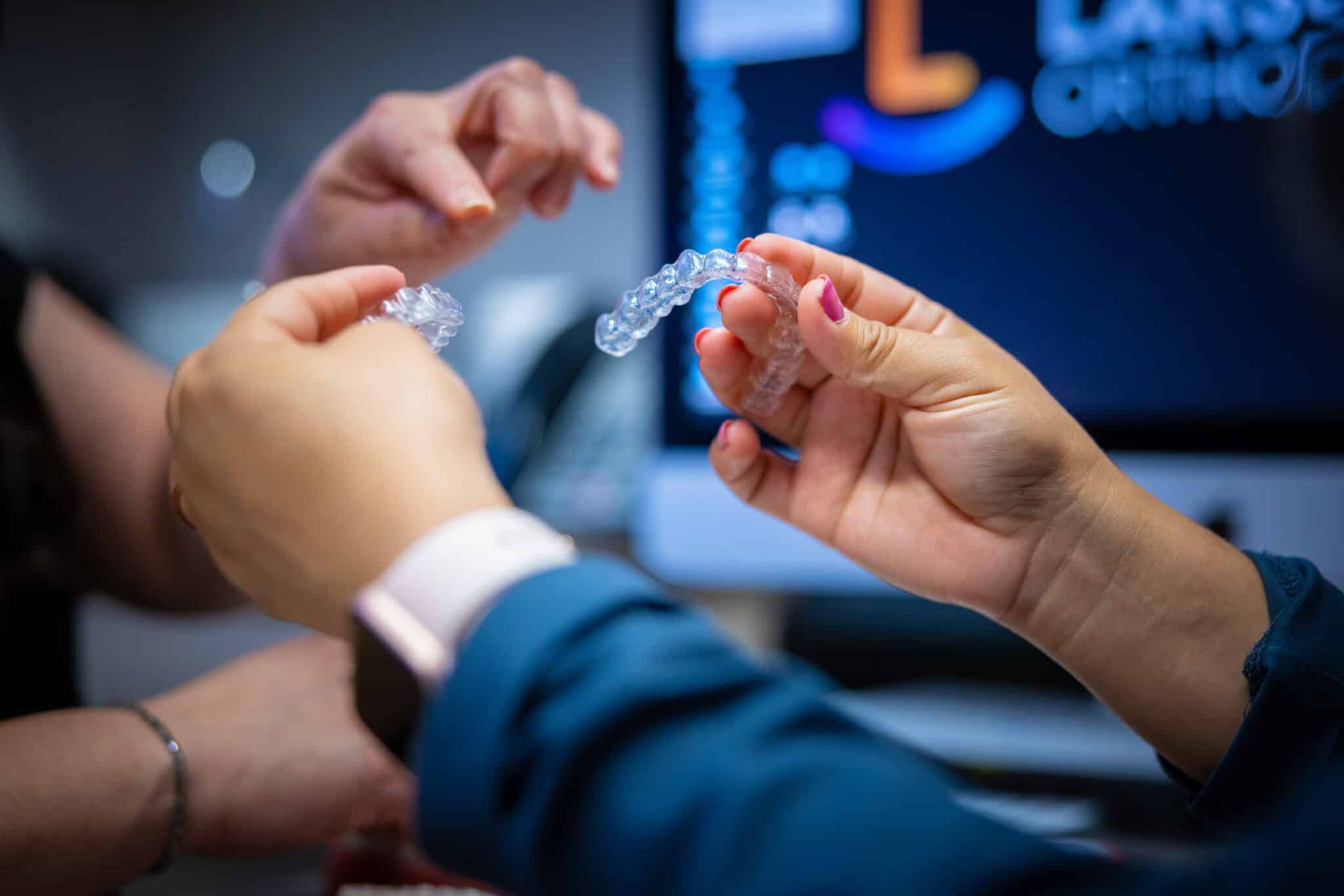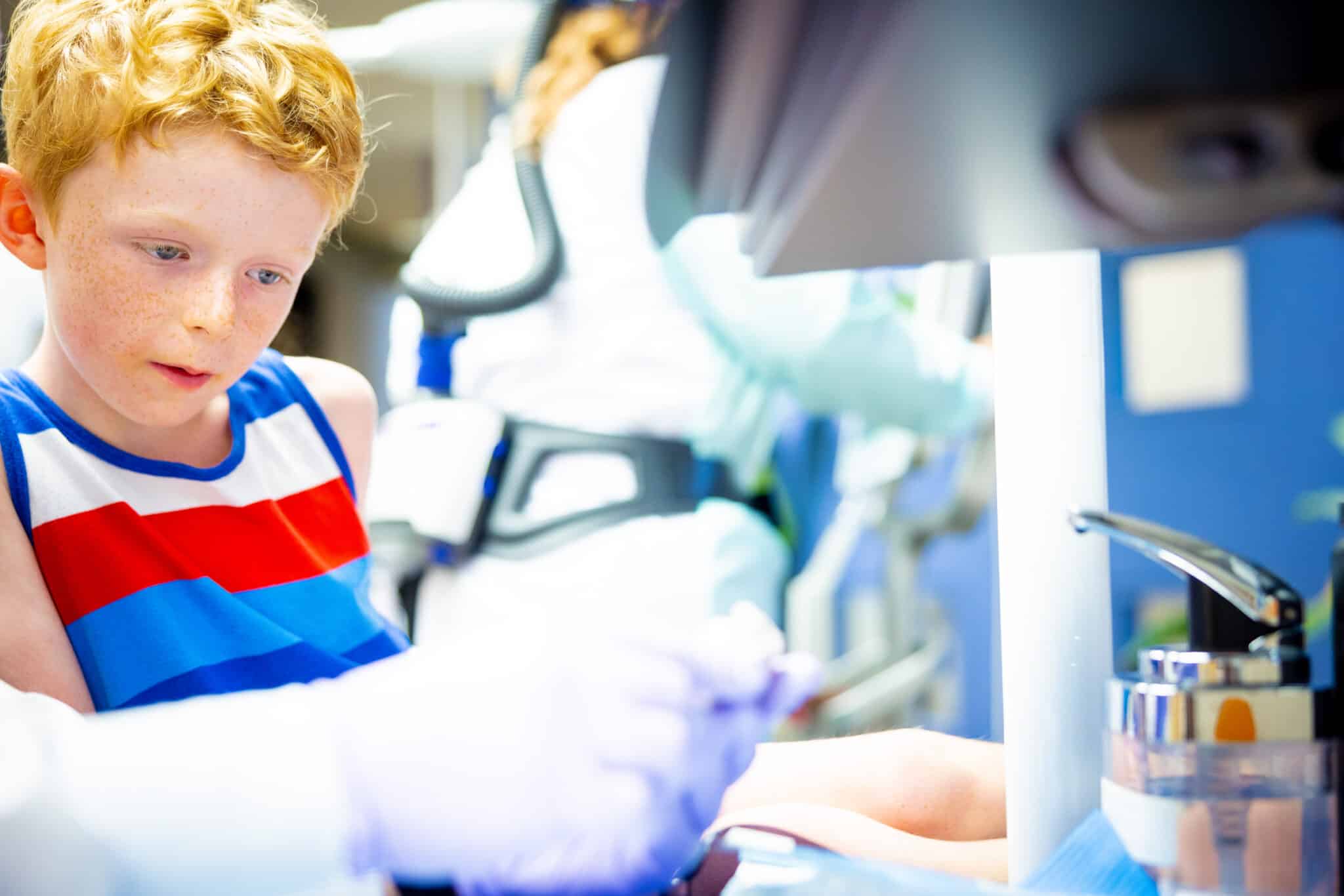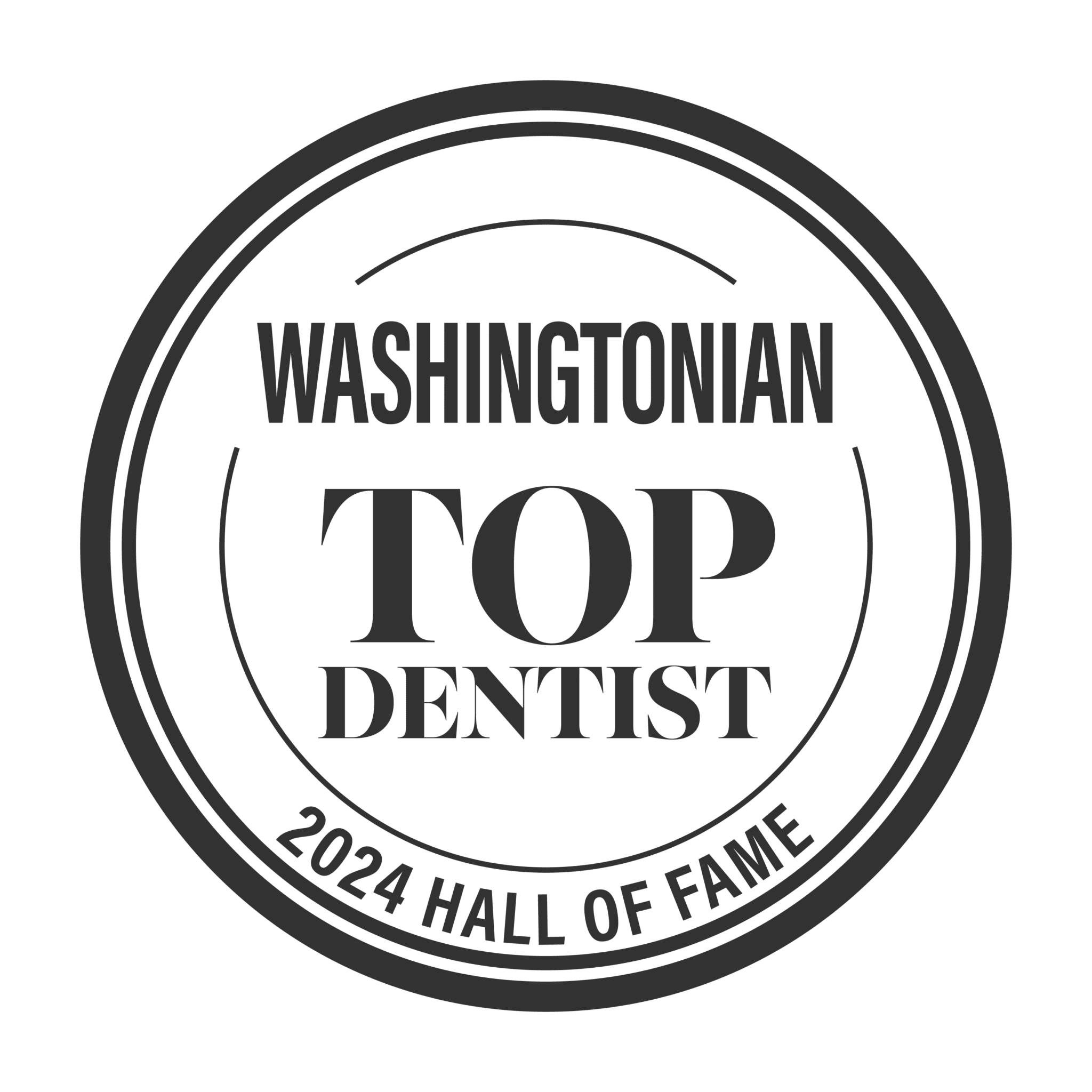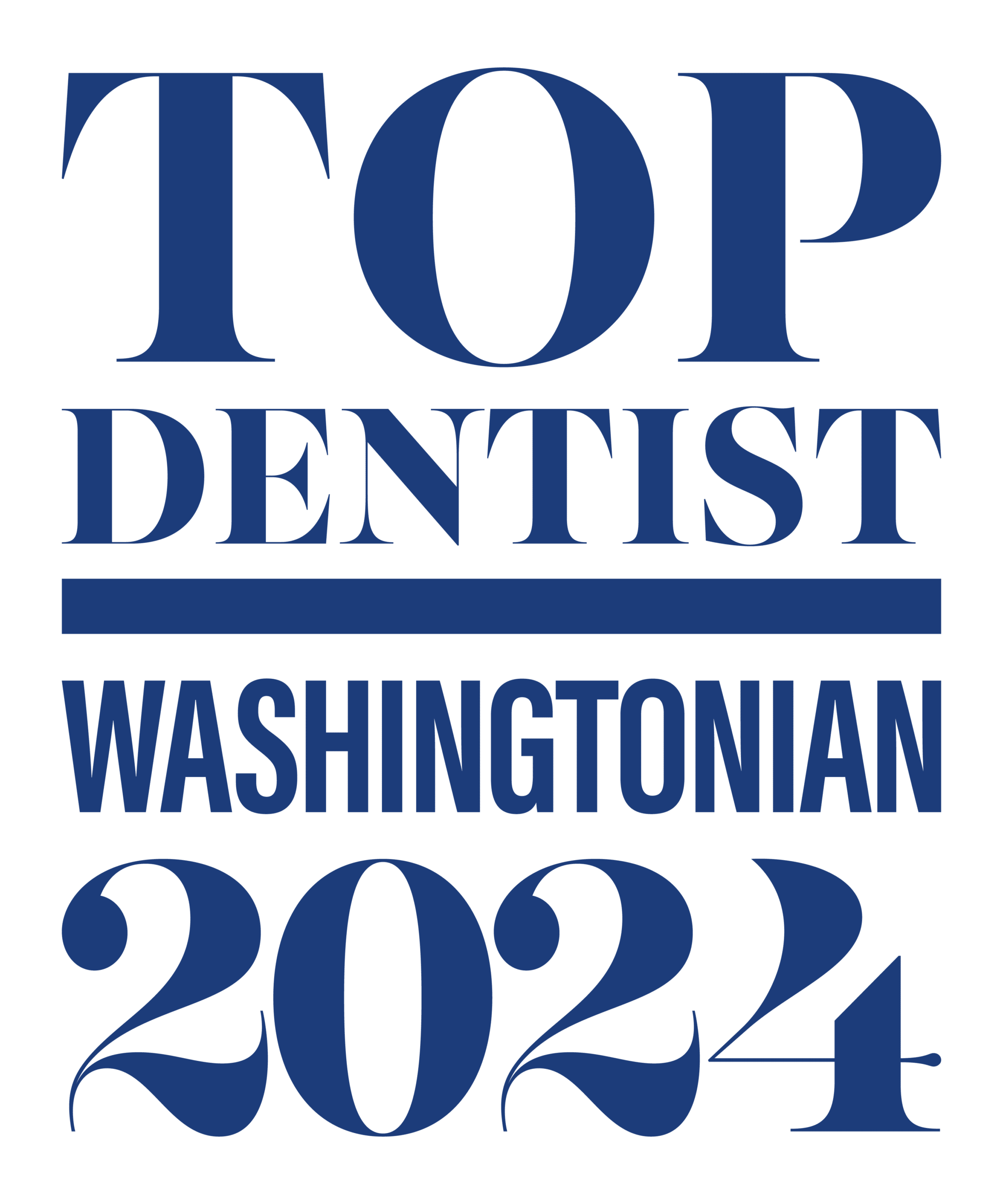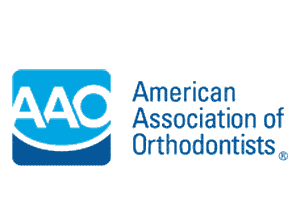If you want beautiful teeth, you have to keep them clean. Brushing and flossing are the best ways to do it. Once you get your braces, you may think brushing and flossing will be far more challenging. With the right tools, brushing and flossing can be easy. In the end, you’ll have beautiful teeth and a perfect bite that can last you a lifetime!
Larson Orthodontics has a few hints and tips for you when it comes to getting your teeth clean with braces. Oral hygiene is vital during your treatment with braces or clear aligners, and we can help you keep your teeth clean and beautiful. Let’s look at the best ways to practice great oral hygiene!
Brushing With Braces
Brushing with braces may seem to be more of a challenge. How do you brush your teeth with braces with all those wires and brackets in the way? What happens if you don’t brush your teeth with braces? Not brushing can lead to decalcification of your enamel, the hard outer shell of your tooth. The result is white spots on your teeth, sometimes around the brackets. Those spots can be permanent and difficult to fix without some costly options. That’s why it’s vital to brush at least twice a day for two minutes, and don’t forget to floss!
Using the Right Toothbrush
The first step to great oral hygiene is using the right toothbrush. It’s important to use a soft-bristled toothbrush. The softer bristles are easier on the brackets and wires but also good on your enamel. The harder bristles can wear down your enamel over time.
Manual toothbrushes are okay, but electric toothbrushes do a better job of scrubbing and getting around your brackets. Just make sure you change the toothbrush head every few weeks. Most have colored bristles that fade and tell you when it’s time to change the toothbrush head, but in general, when the bristles start to bend outward, it’s time to switch the toothbrush head.
Using the Right Toothpaste
The right toothpaste is just as important as the right toothbrush. There are various kinds of toothpaste — extra minty, whitening, sensitive, etc. How do you pick the best toothpaste? Rule No. 1: Make sure it has fluoride in it. The fluoride reacts with your saliva to strengthen your enamel. Rule No. 2: There is no rule No. 2. The main thing is to have good fluoride toothpaste. Whether you want more mint or less sensitivity is up to you.
Don’t buy into the fads, though. Self-made toothpaste, charcoal toothpaste, and others won’t give you the fluoride protection you need while wearing braces. Without it, you risk discoloration of your teeth.
Flossing With Braces
You’re probably wondering how to floss with braces since flossing with braces can be pretty challenging. Before, you’d simply grab some dental floss, slide it between your teeth a few times, and voila! Your teeth are clean in between and are ready for brushing (because you should always floss first!). Now, you have all these wires in the way. How do you floss around them? It’s easier than you think if you have the right tools!
Better Flossing With a Floss Threader
Flossing can be easy with the correct tool — specifically, a floss threader. These thin pieces of plastic are shaped like a needle with a giant eye. You thread the floss through the eye, then thread the floss threader under or over your archwire and through your teeth. It carries the floss through your teeth so you can floss like normal. It may take slightly more time to floss, but it will go quickly once you get the hang of it.
You can pick up floss threaders at major retailers and pharmacies, likely next to the dental floss.
Using a Water Flosser
Many people with braces use a water flosser, which shoots a high-powered stream of water through the teeth to floss. Water flossers are great for cleaning off excess plaque but aren’t a true substitute for dental floss. That’s because the water can still leave a thin film of plaque behind, leading to tooth decay. Dental floss scrubs the surface of the tooth, cleaning it thoroughly.
Water flossers are great to use when you’re brushing and not using dental floss. You should use dental floss once a day, but you can use your water flosser during the other times you brush daily.
Use a Fluoride Mouthwash
Patients who want extra protection while wearing braces should consider using a fluoride mouthwash. Fluoride mouthwash offers additional protection for your teeth, and it easily gets into the nooks and crannies around your braces. The key is to use the mouthwash correctly.
Wait at least half an hour after you brush your teeth before using mouthwash. This gives the fluoride in your toothpaste time to react with your saliva and provide its full protection to your teeth. Use your fluoride mouthwash by swishing it around your front and back teeth, then spit it out (don’t swallow it!). Wait half an hour before eating or drinking so the fluoride in the mouthwash has time to work properly.
Make sure you don’t swallow your toothpaste or mouthwash. While fluoride is great for your teeth, ingesting it over and over can cause medical issues that could be serious. Make sure you spit out your toothpaste and mouthwash, but try not to rinse your mouth with water afterward. You’ll rinse off all the fluoride before it has a chance to act!
How Often Do I Brush With Braces?
Now that you know what to use, you probably want to know how often you need to use these tools. You know to brush your teeth at least twice a day, but it’s best to brush after every meal, especially with braces. You don’t want food particles to build up in and around your brackets. It’s ideal, but we know it doesn’t always happen. But you should brush every morning and every night before bed. Make sure you brush thoroughly for at least two minutes, covering every tooth.
You should floss at least once a day using dental floss. You need to floss BEFORE you brush because this will get the particles out from between your teeth so they can be brushed away. Some people use a water flosser as well, which is fine. Just don’t use it as a substitute for dental floss every time.
Getting Braces in Alexandria, VA
Larson Orthodontics has spent years providing exceptional braces treatment in the Alexandria, VA, area. If you’re ready to get braces or clear aligners, start with our virtual consult tool, which you can use anytime and anywhere. We will welcome you to our office for a full evaluation and to let you know what treatment options are best for your unique needs. We can also answer any questions you may have about oral hygiene and the best way to care for your braces.




